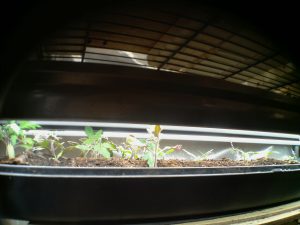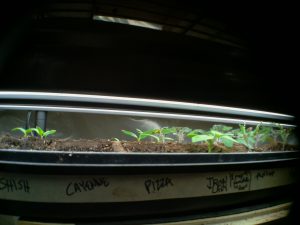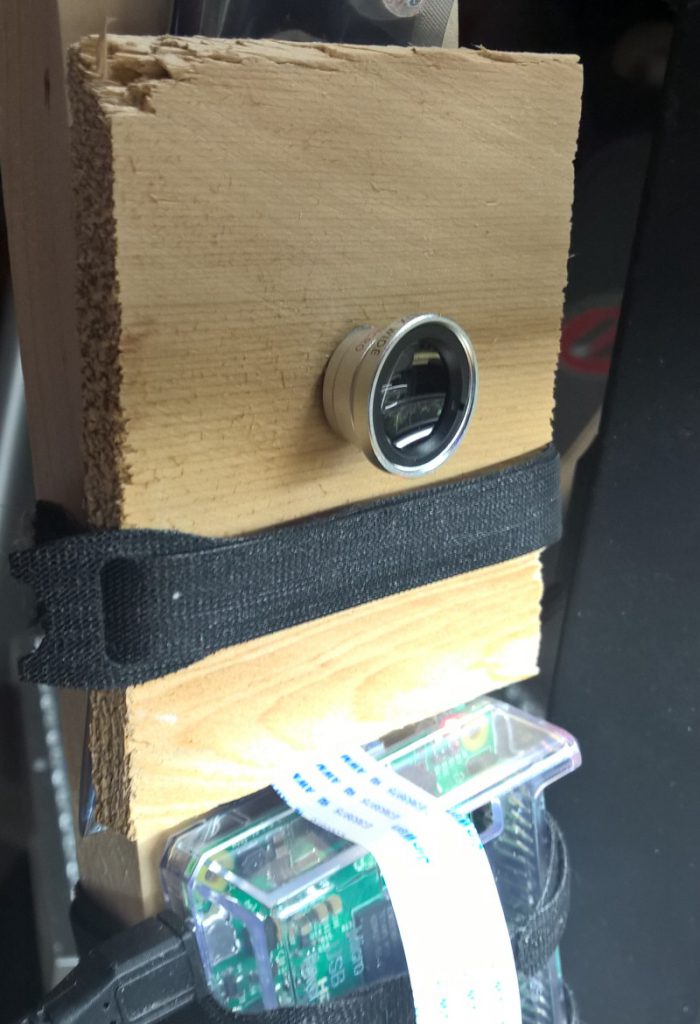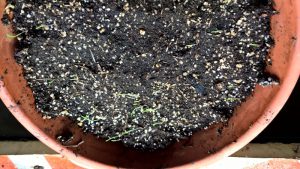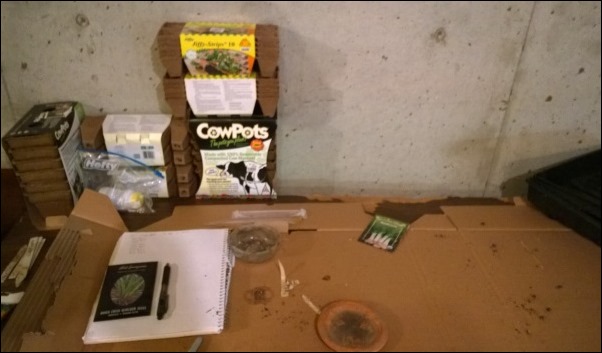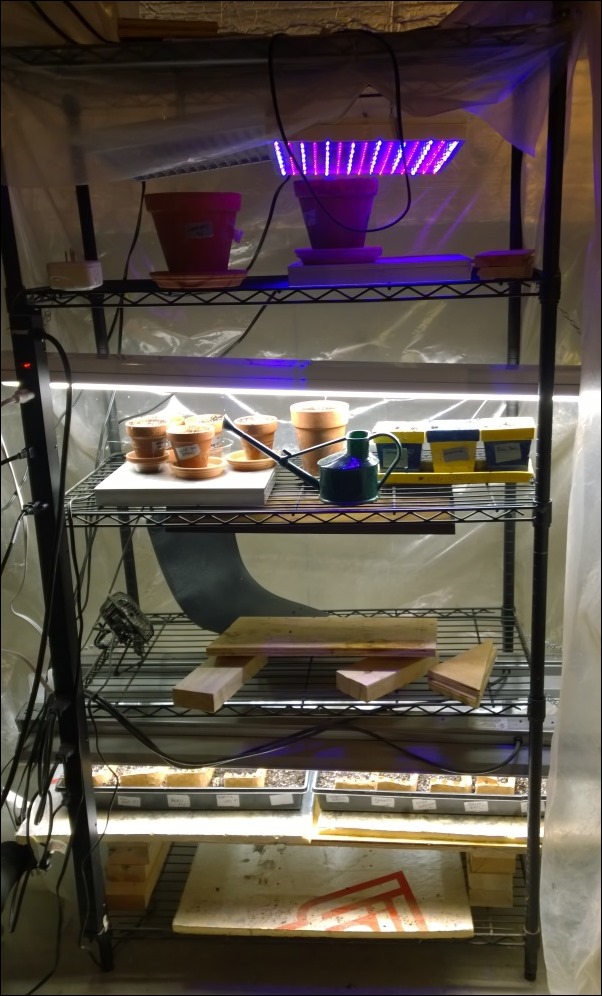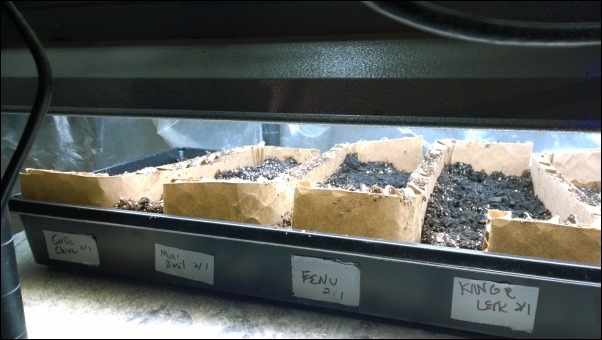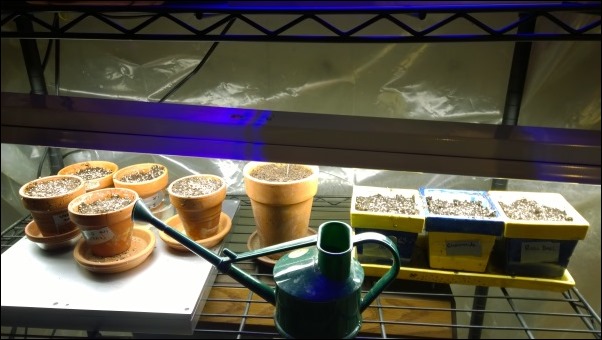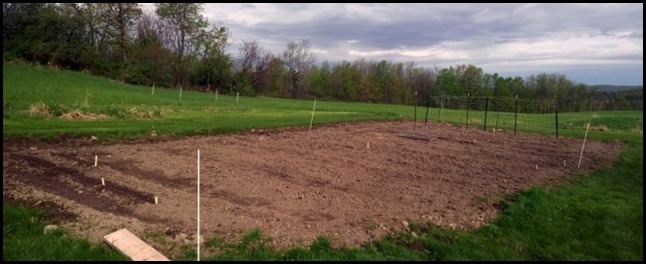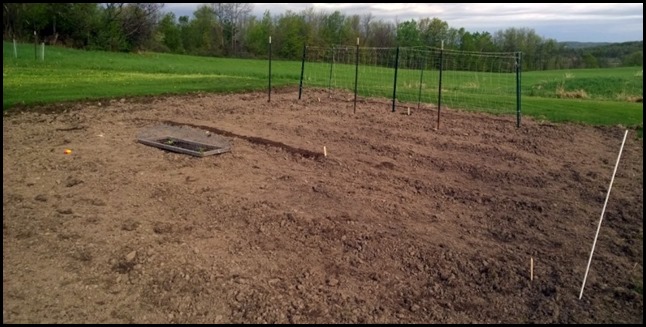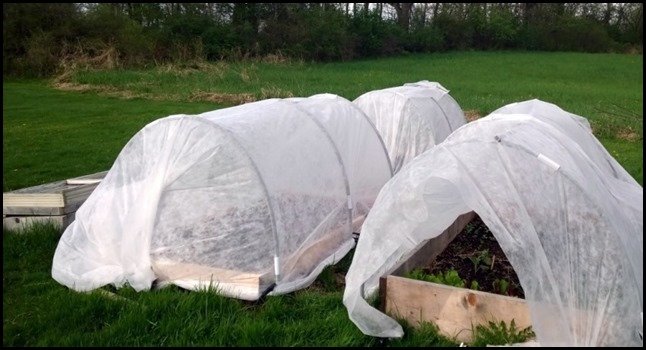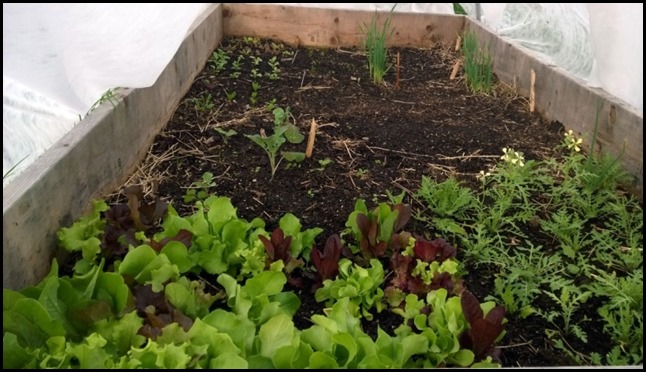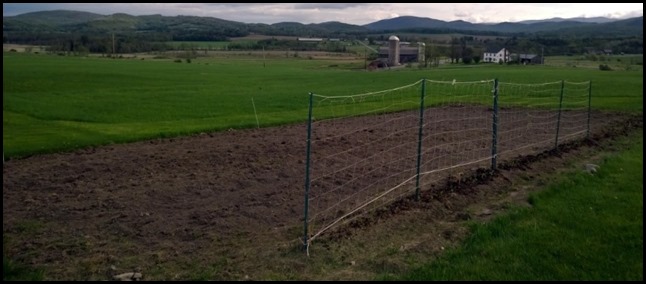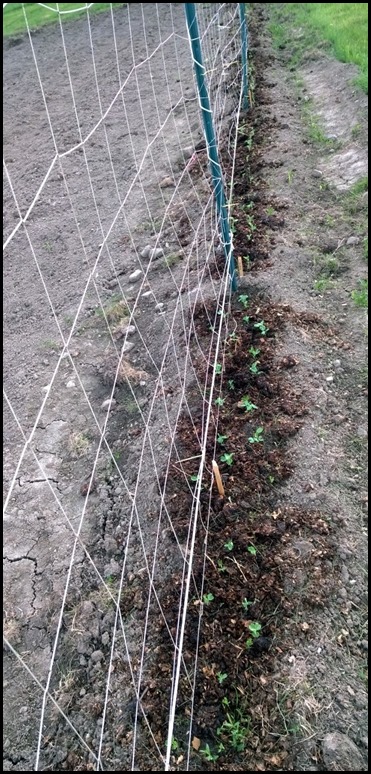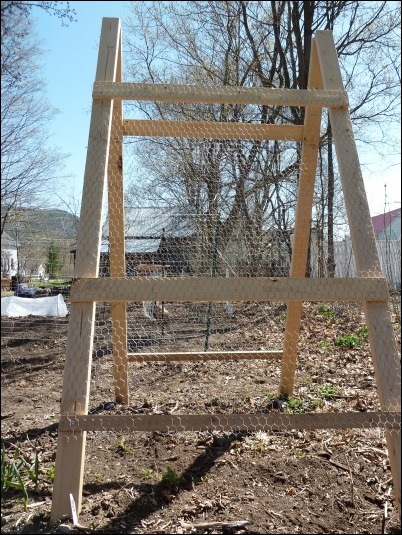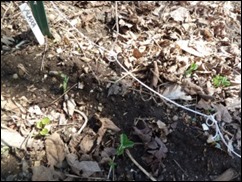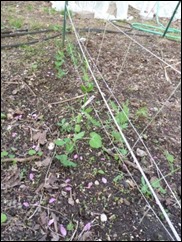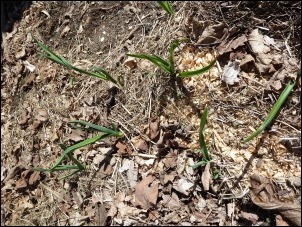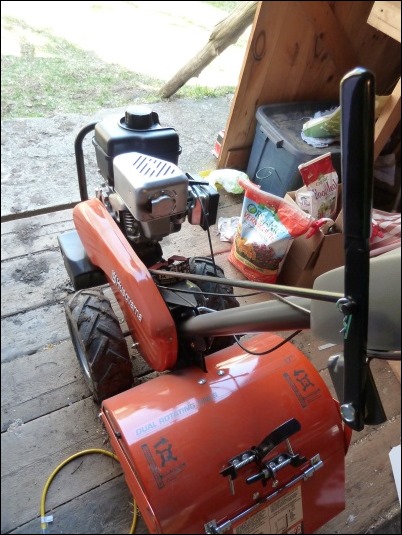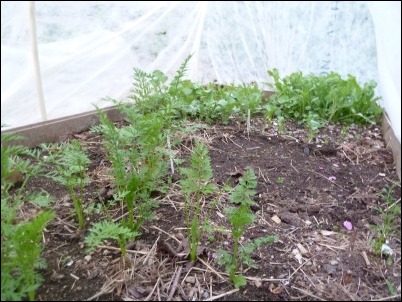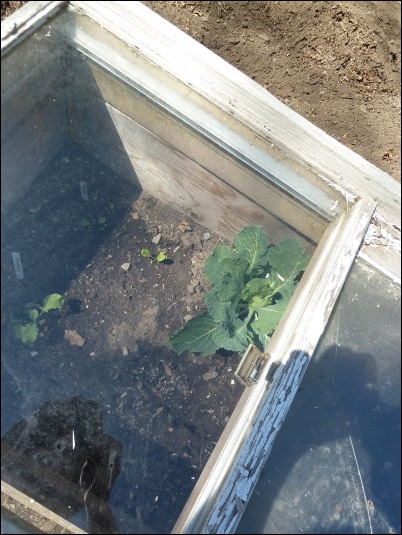Current state of the tomato seedlings, automatically posted from my Raspberry Pi 2 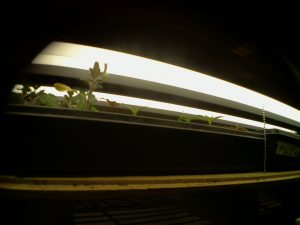
Snapshot of the seedlings on Wednesday, April 15
Snapshot of the seedlings on Tuesday, April 07
First time lapse video of pepper and tomato sprouts
As I mentioned in my last post, I’m working on a project with the Raspberry Pi 2 and one of the things I’m doing is playing around with the camera module.
This little camera is not bad (similar to a cell phone camera), but it definitely does best at a bit of a distance. Probably 6-10 feet at least. I need to be a bit closer to get enough detail and also due to the limited spacing between the grow lights and the seed trays. I ended up picking up one of those cheap little sets of lenses you can get for cell phones. It’s not going to win fine photography awards, but it’s just fine for my needs. The kit includes a fisheye, wide angle, macro and telephoto lens. Here’s a closeup of one of the lenses in place.
My camera mount is a very primitive holder I threw together out of scrap wood, but it does the job.
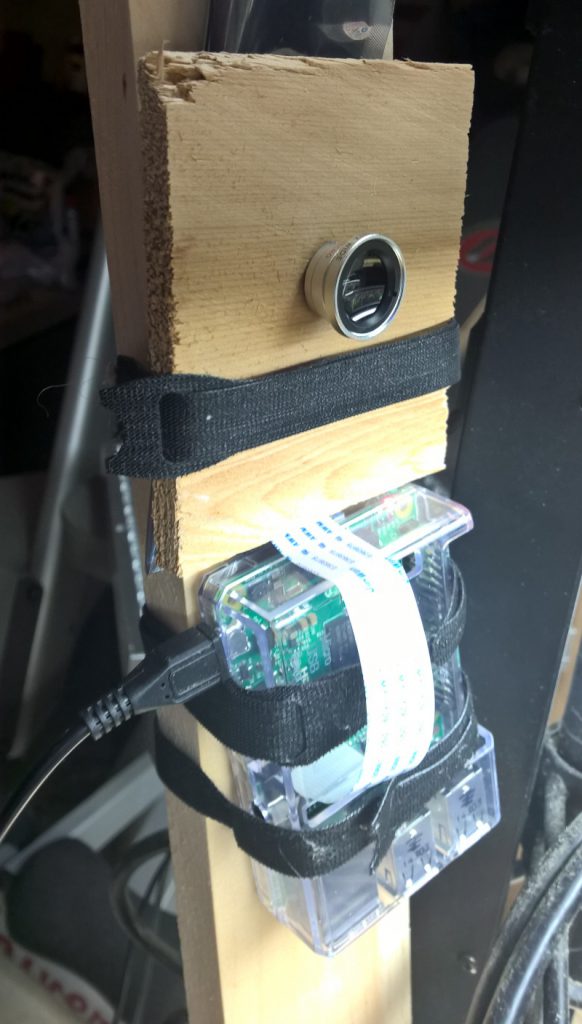
Here is a wider shot of the seed starting area with the camera mount in place. I have it taking photos every 30 minutes of one of my pepper and tomato seed starting trays.
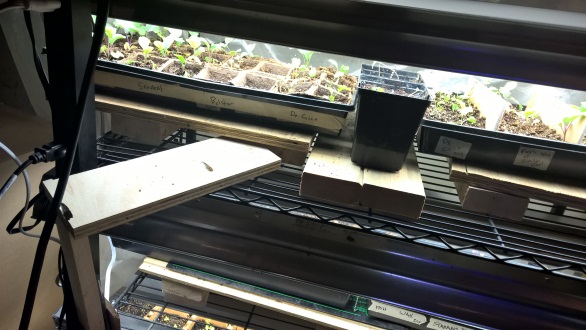
Here is an initial time lapse video showing some of the seeds sprouting and growing. This was taken over the course of 5 days, March 26-30. I do change the camera position and seed tray position slightly, so it’s a bit jerky in spots.
Trying to grow some lemongrass
Seed starts
Well, it’s already that time again. Starting seeds marks the beginning of the gardening year. We already have most of our seeds ordered. It’s still a bit early to start most things, but I am starting some herbs and flowers since they can sometime take awhile to get going and actually will do ok inside for a few months.
I’m also hoping to buy a small greenhouse this spring, so I’m hedging my bets that I’ll be able to move some things out there and get them acclimated with more true daylight earlier in the season. Should lead to more robust starts that can be planted sooner.
Here’s our seed starting space in the basement.
Here is a full view of my growing rack. I would like to add a few more lights this year.
This year I’m trying to start some seeds more by broadcast right in the tray and then transplant the viable starts into the individual cell trays that we usually use. The cell trays have been problematic because typically not all the seeds germinate. So you replant and have seeds at different points of progress or you forget whether you’ve re-planted or you wait several cycles for germination and so on.
Some of the flowers and herbs I’m doing directly in a small pot instead. The small green watering can you see in the photo has worked great, it has a very small spout and face that is very gentle on young plants. Highly recommended as this is much easier than trying to use a spray bottle. You can get it from Amazon.
Next up in a few weeks, brassicas, tomatoes and peppers.
Gardens from scratch
We’ve just about got our two garden plots in shape and have started some planting. Took a lot of tilling and it’s still not great. With the clay soil it is either too wet and mucky or it’s dry with hard clay balls. So going to need a lot of amendments, but we knew that. I’m making semi-permanent raised rows, which should help with drainage and give us a place to focus our compost, manure and other nutrients.
Here’s a few shots of what we’re starting from.
Slightly closer look at the rows.
We’ve got three raised beds with row cover going now.
It’s been really warm for the last week and plants are suddenly taking off. I had to mow the lawn already. The lettuce seems happy. This is lettuce I started indoors in February or March.
Here is a view of the front garden, which will mostly be perennial berries, asparagus, etc. We’re using it this year for a few other things, like peas, pumpkins and potatoes.
And one last shot of some peas that appear to be thriving despite the conditions.
Announcing PickAPacket.com–a new way to find sustainable seed options
Over the past few years I’ve been thinking about an idea to help me track down seeds from my favorite vendors. Near the beginning of each year we get a number of seed catalogs. I love looking through them in the cold winter months, getting a sense of all that is available, new varieties and picking new things to try.
We typically figure out exactly what we still have in inventory and then decide what we need to order. Most of the seed vendors now have excellent web sites to order online. I wanted a way to quickly figure out who has what variety and potentially compare prices. Often we have specific varieties in mind and not all vendors carry that type. We buy a lot of seeds, so we think about price as well. We typically put more stock in the success we’ve had with a particular vendor or variety, as well as how adapted the seeds are to our area.
Although you can find single varieties somewhat easily through Google or Bing now, it’s still a laborious process if you want to compare varieties or do a lot of research quickly. I’m also only really interested in vendors who support the ideals I believe in: no GMOs and a focus on any mixture of organic, heirloom, open-pollinated and generally sustainable options. The only way I really know to accomplish this is to pick vendors I believe in and then crawl their sites to determine what is available. So I wrote a specialized web crawler that does just that. The results are now available at Pick A Packet.
I have some ideas for additional features, but for now it is a limited feature set. I want to make sure the seed companies appreciate the idea of this as a resource before putting too much additional effort into it. I also want to see if anybody else finds this helpful or just me. If so, some ideas for future features include social elements (I’m growing this in this area), ratings of success with particular varieties, ability to share photos of specific varieties (both plants and final crop) and helpful resources on the ideas the site is about (GMO issues, open-pollination, heirloom plants, seed saving, etc.). I would appreciate any feedback or idea you have on any of these ideas or the main concept of the site.
Please share this with any gardening friends you may have. I hope you’ll find it useful.
Post move update
As you might expect, life has been pretty busy since our move. Fall went pretty quick and now we are already headed into winter, so work outside will slow down for awhile. Here are a few of the things we’ve been working on.
- We put in an herb spiral. I’ve always found the idea of these one of the most interesting and accessible permaculture concepts. We have some rocks scattered around the property, so I was able to build this with a combination of repurposed bricks and rocks.
- We had one little hoop in a raised bed for the fall. Got quite a bit of lettuce and other greens out of it into November. Also some radishes and Hakurai turnips. The last part of November was fairly cold here, so not much is still growing now. But there are also carrots and bunching onions that should come back and continue to grow in the spring theoretically.
- Kristin is experimenting with the concept of a couple of “lasagna” plots, which is basically where you build up a raised bed using various materials (grass, straw/hay, food waste, chicken shavings/manure, spent beer mash, etc.) It’s basically building a compost pile, letting it sit over the winter and early spring and then planting directly into it. We have two of them going so far, both a standard 4’ x 8’ size that we settled on for raised beds. Makes it easy to use scrap dimensional lumber for frames and the hoops fit over them nicely.
- We dug up another section in our back pasture and planted garlic. Our tiller really struggled with getting anywhere with our dense pasture grass sod. It took about 8-10 runs to break the ground into anything useable. So we may need to get some sections of the properly plowed at least once to get certain things started, like asparagus, strawberries, etc.
- I just planted a couple of hazelnut bushes from the Arbor Day Hazelnut Project. They are developing hybrid bushes that can grow in a much wider range of climates, hopefully over most of the US instead of mainly in a small area of the Pacific Northwest. I also started our windbreak with 10 Norway Spruces from Arbor Day. Eventually I want to build up a substantial windbreak on the north and east sides of the house and along the lane, with a mix of evergreens and deciduous trees.
- We did a bunch of efficiency work on the house, including blowing cellulose into the attic which was never done for some reason. We also insulated the basement above grade for now as well as our bulkhead door, with the intent of eventually putting foam board on the entire set of walls in the basement. This may not be necessary and foam board is pricey, so we’ll see how it goes. The basement is already noticeably warmer. We would like to eventually put in another heat source, such as a pellet stove. We have a fairly efficient oil furnace, but I don’t like having that as my only option and it’s certainly not the cheapest way to go for a house of this size.
This winter I hope to do a few small projects, including building a larger chicken coop using the principles in Fresh Air Poultry Houses. We also still have some odds and ends to wrap up in the master bath, painting to finish in the upstairs and some electrical work to have done. I hope to get some additional storage and a workbench/tool area set up in the basement, now that we have some of the insulating done.
I’ve ordered my first 4 apple trees for spring delivery and we’ll need to start thinking about strawberries, blueberries, asparagus, rhubarb and additional trees for windbreak to plant in the spring. Plus our normal seed starting and the fun we always have looking though all our seed catalogs. This year we’ll finally be able to grow some things we didn’t have room for in the past, such as sweet corn, melons, pumpkins and lots of other things. Not sure we’ll get to all that in the first year, but we’ll do what we can like we do every year.
Some quick garden 2013 updates
Due to a nice warm spring here in Vermont, our garden is off to a great start. Here are some photos from a couple of weeks ago, stuff is much bigger now.
We are trying out some new trellis ideas. The trellis netting works great for most things (tomatoes, peas, beans, cucumbers), but couldn’t really hang (no pun intended) with the heavier squashes such as Blue Hubbard. Here is a new trellis I built using scrap wood and chicken wire. May build a few more, this only took about an hour.
Peas poking through and then a few weeks later
Garlic off to a good start. It’s almost 2 feet high now
Bought a tiller
Hoop tunnel
Cabbage overwintered in cold frame. Soon after we transplanted it, the chickens got into it. This poor cabbage can’t catch a break. It’s still limping along, so maybe it will come back.
You can see more photos and keep up with our 2013 garden on Flickr.

